Of all the safety risks that could threaten public transportation, a recent survey of transit officials found that after collisions, extreme weather events were their second-highest concern. Conducted by the Urban Transportation Center at the University of Illinois at Chicago, the survey asked respondents about the most common types of extreme weather their agencies experience, their perception of future risk and how their organizations are preparing and responding to the threat.
According to responses from 352 individuals working in 197 transit agencies nationwide, thunderstorms and severe rainstorms are the most frequent type of extreme weather event impacting agencies, followed by extreme cold, extreme high winds and extreme heat. The region-specific but dramatic weather events that often make national news, like hurricanes and storm surges, ranked the least frequent type of extreme weather.
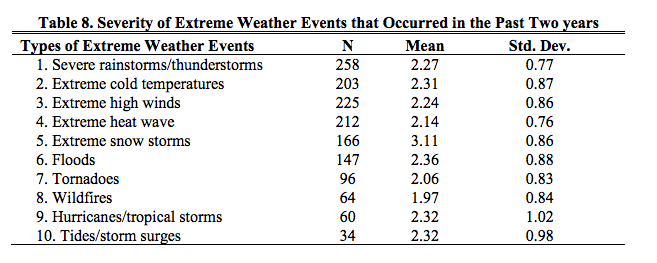
The greatest impacts, though, come from snowstorms and flooding, which rank fifth and sixth respectively for frequency. When asked to identify an extreme weather event that had the most adverse impact on their agency in the last two years, more than half of respondents pointed to a snowstorm, flood or heavy rainfall. Only 23 percent said their region had experienced no extreme weather event in the past two years.
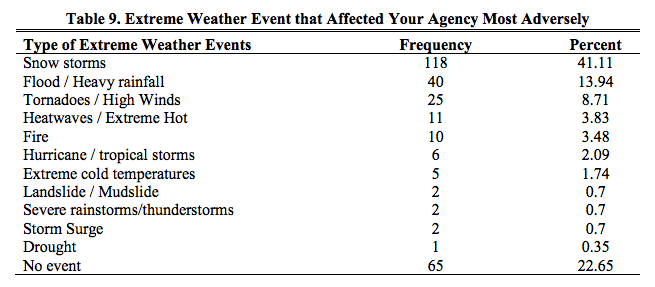
The most common fallout from extreme weather was significant delay, followed by temporary shutdowns and damage to vehicles or equipment. One in five respondents said that an extreme event had resulted in complete or partial failure of transit services or damage to infrastructure and facilities.
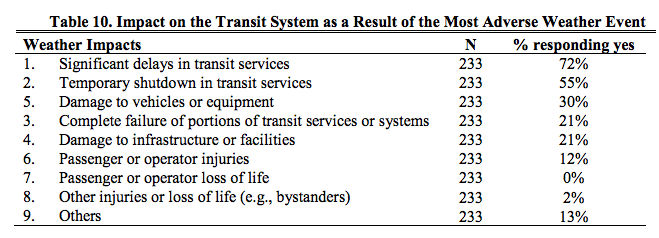
The survey also asked participants to respond to a series of questions about their agency’s perception of extreme weather events. Over 40 percent either agreed or strongly agreed that extreme weather is becoming more frequent, and half agreed or strongly agreed that their agency was increasingly concerned about the impact of extreme weather on infrastructure and operations. Less than five percent believed or strongly believed that most people in their agency think extreme weather events are becoming less severe.
Most transit officials said their agencies were prepared to respond to the threat of extreme weather, or getting there. Eighty-four percent of respondents said their agency has developed an emergency plan that includes extreme weather and that they had attended weather or disaster-related meetings outside of their organization. Similarly high numbers reported that they had done safety training, coordinated with agencies to develop a joint response, and designated a person in charge of extreme weather. Only 34 percent had conducted extreme weather simulation exercises.

Access to financial resources was ranked the most important barrier to more effective preparation. And indeed, while 65 percent of respondents said their agency had assessed its vulnerability to extreme weather, only 35 percent had estimated the costs of responding to such an event. Only 19 percent had set aside funds to manage extreme weather events, and only 13 percent reported applying for grants that would help mitigate weather impacts.
In other words, transit agencies are increasingly aware of the risk, but frequently unable to put the necessary resources behind mitigation. After financial resources, respondents ranked internal coordination and awareness of extreme weather risks as the biggest barriers to preparedness.
Editor’s Note: This article has been changed to correctly identify who led the survey.
Jen Kinney is a freelance writer and documentary photographer. Her work has also appeared in Philadelphia Magazine, High Country News online, and the Anchorage Press. She is currently a student of radio production at the Salt Institute of Documentary Studies. See her work at jakinney.com.
Follow Jen .(JavaScript must be enabled to view this email address)

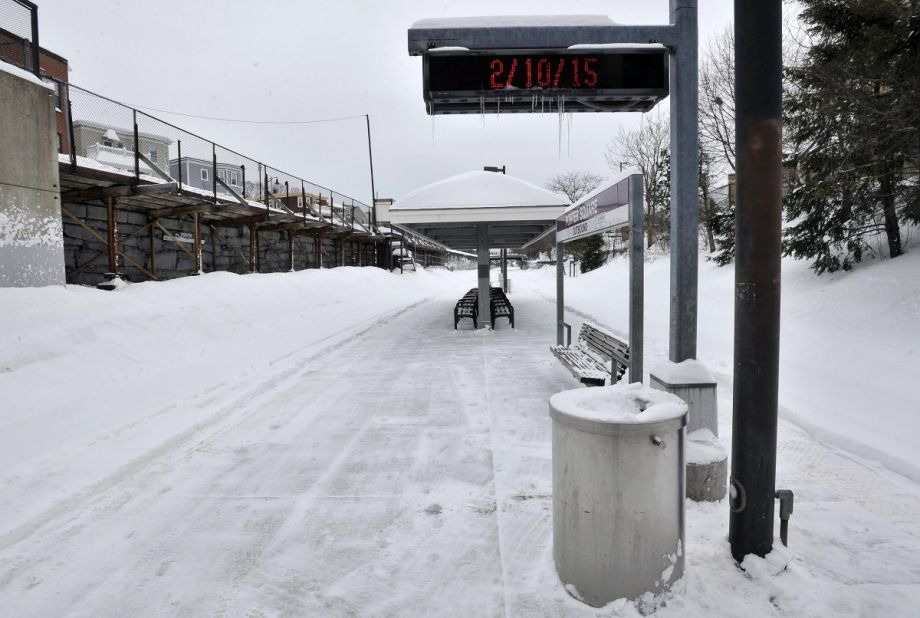




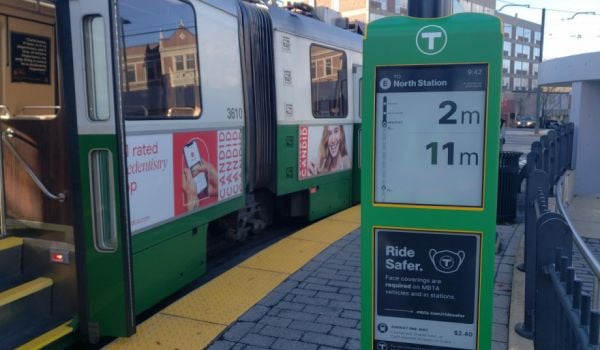

_1200_700_s_c1_600_350_80_s_c1.jpg)







